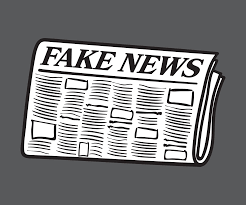 Jim Jones said many things over the years that he spent as the leader of Peoples Temple: he was, after all, the spiritual, moral and ethical compass by which his membership navigated both themselves and the rest of the world. Many times, the statements Jones made were misleading or flat out dishonest. He said these questionable things both in the United States and in Jonestown. Sometimes, it seemed that he made these statements in an attempt to protect people from harm: other times, there was no real reason for his distortions of fact.
Jim Jones said many things over the years that he spent as the leader of Peoples Temple: he was, after all, the spiritual, moral and ethical compass by which his membership navigated both themselves and the rest of the world. Many times, the statements Jones made were misleading or flat out dishonest. He said these questionable things both in the United States and in Jonestown. Sometimes, it seemed that he made these statements in an attempt to protect people from harm: other times, there was no real reason for his distortions of fact.
What is important is to examine both Jones’ inaccurate statements, and what he was trying to achieve while making them: even more important, though, is to ascertain whether he himself actually believed what he was saying. In other words, did some of the claims that he made to his audiences emerge from his own, personal view of issues that was skewed away from the facts? Or, instead, did he purposefully and knowingly propagate untruths?
The term “Fake News” has been invoked quite often in recent history, and refers to “a type of ‘yellow journalism,’ or propaganda, that consists of deliberate misinformation/hoaxes, spread via traditional print and broadcast news media, and/or social media.” Fake News stories play to the emotions or fears that plague even the most rational and intelligent of individuals: they can concern life and death issues (such as warnings about a possible mad killer being at large in a certain area), or they can be about matters more pressing in a philosophical sense (how, exactly, does one define a true patriot of the United States, etc.?). Outlandish bylines and photos attract us to fake news articles, and, before we know it, we are unable to distinguish between real news items and ones that have been manipulated.
Fake News stories are designed to pull us in and mislead us with incorrect information that we will, hopefully, pass along to others. In an interview with the [now defunct] website ceros.com, Brooke Binkowski, managing editor of snopes.com (a website that exists to fact check rumors, urban legends, and Fake News), said: “Fake News is tailor-made to evoke an emotional response, because that’s how they make their money – by being shared… If you read it, it’s going to piss you off or make you laugh at someone’s expense, or most likely, it’s going to tap into existing fears of a changing world.”
It would be bad enough if Fake News stories merely propagated certain partisan viewpoints or disseminated incorrect facts, but these stories have also been known to endanger innocent lives. On February 28, 2017, President Trump addressed a joint session of Congress, during which he saluted the widow of a Navy Seal who had died in combat, and spoke of the great sacrifice that both had made for the country. Shortly thereafter, The Underground Report published a story in which they claimed that comedienne and talk-show host Whoopi Goldberg had said on her television show, “The View,” that the widow “was just looking for attention. These military widows love their 15 minutes in the spotlight” (mediamatters.org). As it happened, Ms. Goldberg had never said anything even remotely close to that about the Navy Seal widow, but enough people read the story and believed that it was true that she had to hire extra security for herself and her family in response to threats of serious harm from anonymous strangers. This is just one example of how Fake News can be dangerous to the physical well-being of individuals.
Another purpose of Fake News stories is to mobilize those who would share the misinformation with others: the further that the inaccurate reports go, the more people who read them, the better. People’s opinions and beliefs are manipulated by these stories because they are presented as real news from a legitimate source, a newspaper, an online website that visually appears the same as other verified news sites, etc. Those who encounter these Fake News stories tend to buy into them as well, because the untruths that they promote sound familiar to the reader/listener. The look of legitimacy, coupled with the charm and theatrical glitter that is used to attract readers, helps these stories to live on, oftentimes long after they’ve been debunked.
* * * * *
Jim Jones was no stranger to manipulating news stories to his benefit over the years. Like many other men and women of the cloth, he was an excellent story teller, and quite convincing. It was no great task, therefore, for him to enthrall his congregation with tales of racial injustice, etc., that he claimed was legitimate news. During the time that Peoples Temple thrived in the United States, Jones had to be a bit more careful with his claims, as his followers had access to sources of news other than him; they could easily watch the news on television, or pick up a newspaper on the corner. Once the mass exodus during the summer of 1977 was complete, and Jones and his membership were living in isolation at Jonestown, however, there was no longer any need for him to rein in his claims about what was going on in the United States or other parts of the world. Only Jones had access to newspapers, brought in to him from outside, and even though there was a ham radio in Jonestown, only a select few were allowed to use it, and even then, the purpose of the set-up was communication with others, not for listening to news broadcasts.
To keep everyone in the settlement up on current news, Jones recorded hundreds of news tapes, reading news stories and adding his commentary whenever the story contained a lesson he felt was important to teach. These tapes were then played over the loudspeaker system. He not only selected what stories the people of Jonestown heard, he also decided on what version of the stories they’d hear, oftentimes changing the details of exactly what had happened in order to fit his narrative that the United States especially, but other parts of the world as well, were steadily becoming more racist and dangerous for his largely African-American group.
Consider the following examples:
- Tape Q196, recorded on September 25, 1978, includes the following item:
Recently, The Daily World, a Socialist paper, published an article about one Doctor Hal Becker, a Behavioral Scientist at Tulane University, who has developed a mind control device designed to prevent shoplifting. Becker’s invention, which works like hypnosis, electronically embeds subliminal messages saying, “I will not steal” in background music in stores and supermarkets. The Louisiana CLU [Louisiana chapter of the ACLU], noting how the device could be used to transmit messages, promoting all kinds of racism and other poison, call the implications terrifying and reminiscent of Orwell’s 1984.
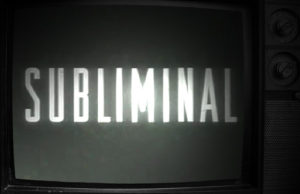 Such claims about a mind control device would terrify anyone, especially if they trusted the person reporting the news, but what Jones claimed and the reality of the situation couldn’t be farther apart. Hal Becker had indeed worked at Tulane University as a Behavioral Scientist, but he had left the institution in 1951, some 27 years before the story that Jones related. Dr. Becker had created a business venture called The Behavioral Engineering Corporation, and registered what he called his “Black Box” with the Patent Office. The device was designed to deliver subliminal messages, such as “I will not steal”, while typical Muzak was played in stores. It was used in a New Orleans supermarket, which reported after a few years that the subliminal messages had prevented roughly $100,000 a year in losses from shoplifting by customers and employees alike. The scientist went on to investigate ways in which he could further profit from his invention, including efforts to get pro-athletes and even entire teams to pay him to create positive subliminal messaging programs for them, designed to improve their performance. At no time, however, did Dr. Becker or his company do anything even remotely close to Jones’ claim of creating subliminal messages that would encourage “racism and other types of poison” be implanted in the minds of unwilling participants.
Such claims about a mind control device would terrify anyone, especially if they trusted the person reporting the news, but what Jones claimed and the reality of the situation couldn’t be farther apart. Hal Becker had indeed worked at Tulane University as a Behavioral Scientist, but he had left the institution in 1951, some 27 years before the story that Jones related. Dr. Becker had created a business venture called The Behavioral Engineering Corporation, and registered what he called his “Black Box” with the Patent Office. The device was designed to deliver subliminal messages, such as “I will not steal”, while typical Muzak was played in stores. It was used in a New Orleans supermarket, which reported after a few years that the subliminal messages had prevented roughly $100,000 a year in losses from shoplifting by customers and employees alike. The scientist went on to investigate ways in which he could further profit from his invention, including efforts to get pro-athletes and even entire teams to pay him to create positive subliminal messaging programs for them, designed to improve their performance. At no time, however, did Dr. Becker or his company do anything even remotely close to Jones’ claim of creating subliminal messages that would encourage “racism and other types of poison” be implanted in the minds of unwilling participants.
None of that was revealed to the people of Jonestown. They were predisposed to believe that Jones was being truthful, and anyone doubting his claims had no way to check them. The result? The Becker story was further proof that the United States was quietly becoming more racist and hostile to minority groups.
- Also on Tape Q196, Jones recounts the story of Wallace Davis, a young black man from Chicago, who, while in the company of a friend named Fontenot, was shot by a Chicago Police Officer. Davis had done nothing to warrant such a lethal use of force, Jones said:
Chicago Police Officer Donald Freels … has admitted shooting twenty-nine-year old black man Wallace Davis to death… The police brutality victims were hit March 8, 1976, after they notified the police of a hold-up attempt at his fast food store in Chicago… Davis has since undergone a series of operations that lasted several months and finally terminated in his death in June.
In digging more deeply into this story, we find that Wallace Davis was indeed shot by Chicago Police Officer Donald Freels. However, the incident did not play out as Jones claimed that it did. Davis and Fontenot were pulled over by Officer Freels and his partner, Officer J. Daube, around 6 am on March 8, 1976, because their car and physical appearances matched the description of two men who had recently been involved in a shooting. Officer Freels got out of his police car and approached Davis and Fontenot, who were exiting their vehicle. Freels mistook an item in Davis’ hand as a weapon and fired, shooting the young man in the back.
All this was true, but what happened next was not. Davis was most definitely injured, but he did not die. He survived and went on to sue the City of Chicago and Officer Freels for his injuries, eventually receiving a settlement of $210,000. In addition, Wallace Davis went on to become a City Councilman and served under the first African-American Mayor of Chicago, Harold Washington.
Why would Jones relate the story of what happened to Wallace Davis so incorrectly? The truthful story about what had occurred – that Wallace Davis had survived and received compensation for his injuries – wouldn’t have fit into his narrative in which the United States had become an extremely dangerous place in which to be an African-American. He needed to keep that narrative alive in order to make the people of Jonestown reject the idea of returning to the United States, and reinforced their belief that he, Jim Jones, had saved them and their children by moving them down to Guyana.
- On Tape Q182, recorded on October 9, 1978, Jones states that a “spy trial frame-up” was in the making in New Jersey against two Soviet employees of the UN Secretariat. If the two Soviets were to be convicted of spying, he says, they would face the death penalty, because “they are charged with trying to buy US Defense secrets.” He is quick to affirm that these two Soviets are innocent, and that the US government is trying to set them up simply because they’re “hated” Communists.
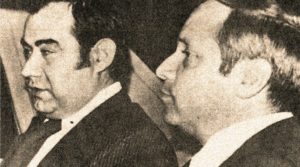 The truth was that the FBI arrested two Soviets, Valdik Enger and Rudolf Chernyayer, for having accepted classified information on anti-submarine warfare that had been passed to them by a US Naval Officer. It had been a sting operation: the Naval Officer had been acting upon instructions given to him by the FBI and the Naval Investigative Service to give the documents to the two Soviets.
The truth was that the FBI arrested two Soviets, Valdik Enger and Rudolf Chernyayer, for having accepted classified information on anti-submarine warfare that had been passed to them by a US Naval Officer. It had been a sting operation: the Naval Officer had been acting upon instructions given to him by the FBI and the Naval Investigative Service to give the documents to the two Soviets.
Jones was undoubtedly aware of what had happened, but he seized upon the chance to manipulate the truth in order to demonstrate to the people of Jonestown that, in the United States, Communists were not welcome and would be sentenced to death simply for being Communists. By extension, since he had declared they were all Communists, they themselves could not live safely in the United States. The case itself came to resolution after the tragedy at Jonestown. Found guilty, the two Soviets were each sentenced to fifty years in prison, but were later exchanged for five dissidents from the Soviet Union.

But perhaps the most pervasive piece of Fake News that Jones used was something that he returned to time and time again. The King Alfred Plan originated in the 1967 novel, The Man Who Cried I Am by John A. Williams, created as an international scheme to eradicate all people of African descent. In an attempt to flesh out his fictitious plan and give it the guise of realism – so as to speak to the zeitgeist of the turbulent late 60’s, to scare his audience, perhaps even to drive up book sales – Williams wrote out a full mock-up of the plan which detailed how such a plot would be implemented in the United States. Along with listing what government agencies would be involved and what they would do to work towards the aim of eliminating black Americans, the author asserted that black people would be put into concentration camps in the United States in the event of a major racial incident. Interviewed by Jet Magazine, Williams explained that he had asked himself, “What would any administration do in a situation when a large segment of the population was discontented and tearing down the neighborhood… threatening the order and the established regime?” In other words, the King Alfred Plan is the result of Williams brain-storming how he thought the United States government might react in such an event.
As a marketing device to get people interested in his book when it was first published, Williams actually made copies of his fictitious King Alfred Plan – but just the plan – and left them on random seats on the New York subway system. This simple act of marketing genius would have unintended consequences: the individuals who picked up the copies of the King Alfred Plan took the bit of fiction as truth. It wasn’t long before the black community in New York – and, indeed, around the entire country – knew of the King Alfred Plan, and believed it to be completely legitimate. No one could confirm its veracity, but no one could deny it, either: even if someone in the government had officially denied its existence, the disavowal itself would have been seen as proof of the plan’s existence.
Jones seized upon the King Alfred Plan and began to use the urban legend to his advantage to sway minority crowds, including the membership of Peoples Temple. While he may have spoken of it earlier, his first documented invocation of the concept was during an address about the prevalence and depth of racism in the United States which he gave in 1972, five years after publication of the novel, and long after most of his congregants would have heard of it.
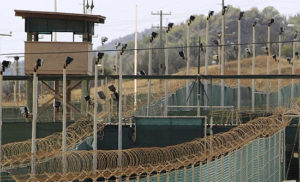 Jones also modified the target group of the plan in order to better fit and intimidate all of the members of Peoples Temple. Whereas Williams’ fictional plan had originally targeted only those individuals of African descent, Jones claimed on Tape Q962 from 1973 that the government was going after “every black and brown and poor white.” Suddenly, everyone was vulnerable to the threat of concentration camps in the United States. But there was more to come.
Jones also modified the target group of the plan in order to better fit and intimidate all of the members of Peoples Temple. Whereas Williams’ fictional plan had originally targeted only those individuals of African descent, Jones claimed on Tape Q962 from 1973 that the government was going after “every black and brown and poor white.” Suddenly, everyone was vulnerable to the threat of concentration camps in the United States. But there was more to come.
In two taped sermons from 1973 – tapes Q962 and Q957 – Jones rattles off Executive Order numbers that are tied to the plan, and claims to have spoken to a “high level military” official who had confirmed the existence of the plan to him. Furthermore, in Tape Q972, also recorded in 1973, he asserts that he is close to members of the press who will “protect” people from being interred in the supposed concentration camps by exposing any such attempt by the government. It is proof of his connections (in this case, to “his press”), to his ability to act – in a word, to his power – that he can protect them should such a crisis occur.
The final time we hear Jones speak of the King Alfred Plan in a taped sermon before the mass exodus to Jonestown, is Tape Q987, recorded in a service in Philadelphia in 1977. He ups the ante from his previously recorded sermon by stating that he has “just come in from Washington [D.C.]”, where he received confirmation of the existence of the plan from “the heads of the government of the United States.” Coming from a man who had helped George Moscone become mayor of San Francisco, who had friends in the state legislature, governor’s office and Congress, and who had even spoken with President Carter’s wife, Rosalynn, those words would have seemed completely credible.
The members of Peoples Temple were familiar with the King Alfred Plan before moving to Jonestown, but there are at least three times in the jungle colony that references to the plan are captured on tape. On Tape Q637, recorded during a White Night on April 12, 1978, Jones laments that moving his followers to Jonestown had nothing to do with wanting them to experience the natural beauty of the jungle. Instead, he claims, “I came [here] to save you from jails, torture, concentration camps, a nuclear war which your skin will roll off your back.” It is, of course, the specter of concentration camps that is central to the Temple understanding of the plan.
Both the short undated – but likely contemporaneous – meeting in the pavilion and the reading of the news on May 31, 1978, recorded on Tape Q197, include direct mentions of the King Alfred Plan. Speaking about the government of the United States during the first segment of the tape, Jones rails, “Racist genocide is not unknown and will be done again. You can believe USA’s got plans for it, the King Alfred Plan.” Then, during his reading of news items, he reiterates that the United States wants to implement the King Alfred Plan and harm African-Americans by doing so. “Naturally, the monopoly capitalist clique that rules [the] USA will bring about a takeover which will put our people in concentration camps and murder blacks in the streets, as protest continues to build.”
The third, and final documented mention of the King Alfred Plan in Jonestown appears on Tape Q741, a news tape most likely recorded in October of 1978, roughly a month before Jonestown’s last day. Jones makes mention of the plan as being up and running in different countries in the world, in conjunction with three different news stories. There is far greater safety from harm for those who live in Jonestown, especially the children, he says, compared to people who still live in the United States. “No guarantees ever exist in the United States of capitalist fascism. Your children are always a prey of a drug-pusher, the system in crime, youth and adult gangs, and then finally, genocidal patterns of ethnic weapons and concentration camps in which our people would have been destroyed.”
Later on the tape, Jones reports on the kidnapping and death of former Italian Prime Mister Aldo Moro at the hands of the Red Brigade. This militant group of socialist Italians had kidnapped Moro in March 1978 and held him for two months in hopes of winning the release of 11 of their comrades from jail. Although the Red Brigade threatened to kill their prisoner if their demands were not met, the Italian government refused to capitulate, and Moro was shot to death, on May 16, 1978.
In recounting this nearly five-month-old story, Jones claims that the jailed Italian socialists weren’t terrorists, but were trying to liberate socialists and communists from concentration camps that were created for them in Italy. With this particular invocation of the King Alfred Plan, he is suggesting that the plan itself has been altered: it’s not just blacks being put in these camps, but socialists and communists, regardless of color, who have been added as targets. The unspoken but completely unmistakable message is, the King Alfred Plan will cover each and every one of us.
The third mention of the King Alfred Plan appears with the supposed establishment and operation of concentration camps in the region of the Union of South Africa known as Transkei, which had broken away from the rest of the country and declared itself an independent country. According to Jones, Transkei is “one of the Region’s Territories of the Union of South Africa, the dreaded fascist apartheid regime run by the big corporations of the United States, in which our people live in virtual concentration camps.” (Regions’ Territories were called Bantustans, or areas that were set aside for members of a specific ethnicity in South Africa.)
As with many other examples of Jones’ Fake News, everything about this story is correct, except for his mention of “virtual concentration camps”. There is no doubt that apartheid in South Africa was a racist concept meant to hold down the black majority population. It is also true that Transkei did indeed declare itself an independent country at one time. However, there were never any concentration camps in the Union of South Africa. Just as in the United States, just as in Italy, and just as in the Union of South Africa, no concentration camps ever existed, and there was no King Alfred Plan in operation, in any of the three countries.
In fact, although Jones spoke about them a great deal, there were no concentration camps and no other manifestations of the King Alfred Plan during the time he spoke about them. But he was effective in invoking the images of them. By the connotations associated with the very words, they bring a sense of horror to all human beings. Jones always claimed to love the members of Peoples Temple with all his heart. He often told them that he was so concerned about each and every one of them – their health and their happiness – that he made himself physically ill worrying for them. But if that is true, why did he tell them about concentration camps that didn’t exist? Why would he twist news stories instead of telling the truth? Wouldn’t such false stories, told by the man whom his followers trusted and admired so deeply, do them more harm than good?
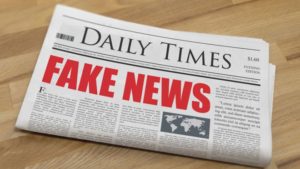 Just as Jones used Fake News to create the narrative that he wanted to tell, so is Fake News today used to achieve a desired result. Our current political leaders use Fake News to try to manipulate the American public on how we view issues, institutions, and even individuals in order to get us to vote how they want us to, or to distract us from larger, more important issues.
Just as Jones used Fake News to create the narrative that he wanted to tell, so is Fake News today used to achieve a desired result. Our current political leaders use Fake News to try to manipulate the American public on how we view issues, institutions, and even individuals in order to get us to vote how they want us to, or to distract us from larger, more important issues.
But Jones may have been driven by a different desired end game. One of the biggest, if not the biggest, things that he could not tolerate was defectors. He saw people who left the group as a deep and personal betrayal of him, and he worried that those who left the Temple and Jonestown would reveal his misdeeds to the world. He simply couldn’t stand the idea of outsiders hearing about what he said and did, and judging him. He also feared the possible legal repercussions for those things he and his inner circle had done, such as confiscating the passports, money, and medicine of all members entering Jonestown.
Jones was also aware that a number of people in Jonestown that wanted to go back to the United States for a variety of reasons. In order to keep those people from leaving, he had to find a way to make them believe that that wasn’t an option. What better way to do so than to use a story that the majority of them already believed was based on fact? The King Alfred Plan had real credence within the African-American community, and had been considered legitimate from the very first whispers of its existence in 1967. It was powerful, amorphous, and secret, and it was something that he could use to his advantage.
Did Jones actually believe it himself, though? Did he truly believe what he was selling to the residents of Jonestown about concentration camps being used to consolidate and destroy communities of blacks and/or socialists? I think he would have said he believed that the King Alfred Plan was real, and moreover, had already been enacted. After all, the conviction with which he spoke about topics was, for lack of a better word, legendary. He never dropped the façade that he was an all-knowing, all-powerful leader in front of his membership. However, this author is quite certain that he knew that he lied to his group about many subjects, and most definitely about the King Alfred Plan. In his mind, it was only a question of whether or not the “ends justified the means” in regards to his use of Fake News to manipulate the people of Jonestown.
And why would he do this? I don’t think that Jim Jones’ ultimate goal when he disseminated Fake News was to protect the people of Jonestown from injury or death, jail, racism, or anything else he professed. Jones was dishonest because his ultimate goal was to keep the membership with him in Jonestown, and to soothe his own abandonment issues. There was nothing altruistic about him telling tall tales to the inhabitants of Jonestown: it was a completely selfish act, meant to satisfy his ego, and nothing more.
Works Cited
https://www.ceros.com/blog/the-internets-lighthouse-snopes-editor-on-fake-news-and-urban-legends/
http://jonestown.sdsu.edu/?page_id=60990
(Bonnie Yates is a regular contributor to the jonestown report. Her previous articles may be found here. She may be reached here.)